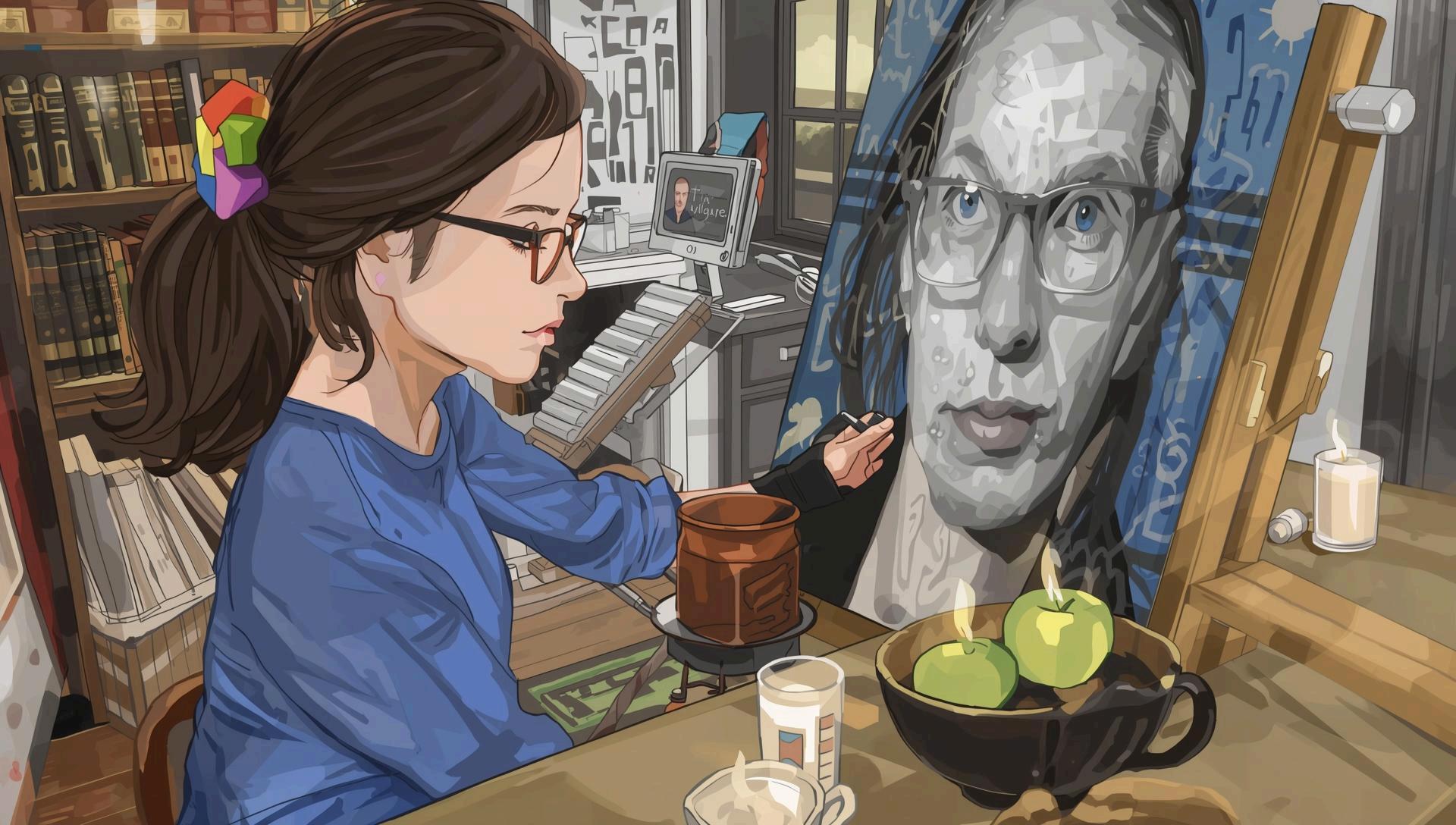From Stress to Serenity: How Art Therapy Rewires the Mind

As explained by Hope Kelly, Art therapy is a distinctive approach to healing and personal growth that engages the mind in ways that traditional verbal therapies cannot. At its core, it combines psychological insight with artistic expression, using the creative process to stimulate multiple brain areas simultaneously When an individual begins an art therapy session, they mustvisualizeanidea,selectthetools or materials needed, andmakedeliberatecreativechoices.Theseactionsactivateboth the left and right hemispheres of the brain the logical, analytical side, and the imaginative,intuitiveside fosteringabalancedformofthinking.
CognitiveDevelopmentThroughCreativeExploration
This interplay enhances cognitive flexibility, allowing individuals to shift perspectives, adapt to new situations, and solve problems more easily. For people recovering from
brain injuries, strokes, or neurodegenerative disorders, art therapy offers a structured yet flexibleenvironmentinwhichneuralpathwayscanbestrengthenedorreestablished.The
brain’s neuroplasticity means that creative tasks, such as painting, sketching, or sculpting,canstimulateregionsthatmayhavebeenunderactiveorimpaired.
This form of therapy supports the natural link between creative play and intellectual development for children. Activities such as drawing stories, designing characters,or building artistic models improve symbolic thinking, directly correlating with reading comprehension and problem-solving abilities. Adults also benefit; regular artmaking keeps the mind active, enhances concentration, and sustains mental agility into later life. In essence, the cognitive benefits of art therapy are not confined to therapy sessions theyinfluencelearning,memoryretention,andeverydaydecisionmakingin lastingways.
EmotionalHealingandRegulationThroughtheCreativeProcess
One of the most powerful aspects of art therapy is its ability to promote emotional wellbeing. Emotions often exist in a space beyond words, and verbalexpressionmay not fully capture their depth or complexity. Art offers an alternative language composed of colors, shapes, textures, and symbols that can represent feelings more accurately than spoken language alone. This form of self-expression bypasses the need for perfect articulation, allowing individuals to convey grief, anger, fear, or joy insafeandauthenticways.
The physical act of creating art is inherently therapeutic Whetherit’sthesmoothmotion of a paintbrush, the tactile sensation of shaping clay, or the intricate work of crafting a collage, the body engages in repetitive, mindful actions that calm the nervous system. These rhythmic motions help regulate breathing, lower heart rate, and reduce stress hormonelevels,creatingaphysiologicalstateconducivetoemotionalbalance
Moreover, art therapy provides a nonjudgmental space in whichindividualscanconfront and process difficult emotions. Under the guidance of a trained therapist, the creative process becomes a safe container forexploringpainfulmemoriesorunresolvedconflicts. Over time, this practice strengthens emotional resilience, teaching individualstorespond to challenges with greater composure and adaptability. The skills gained here often
extend beyond therapy participants report improved mood stability, reduced anxiety, andgreatercontrolovertheiremotionallives.
EnhancingCommunicationandSocialConnection
While art therapy is often perceived as an introspective activity, it also profoundly impacts interpersonal relationships and social engagement. For individuals who find verbal communication difficult such as those with speech impairments, autism spectrum disorders, or trauma-relatedchallenges artoffersawayto“speak”without words Creating a visual piece can communicate personal experiences, emotional states,orinnerthoughtsmoreclearlythanconversationmight.
The artwork often becomes a focal point for dialogue between therapist and client in individual therapy sessions. The therapist may ask questions about the symbols, colors, or imagery used, leading to insights that verbal discussion alone might not uncover. This shared focus can make therapy feel less confrontational and more collaborative.
Group art therapy amplifies these benefits, creating opportunities for collaboration, mutual support, and empathy Participants in group settings often work on joint projects, share their creations, and interpret each other’s work. These interactions foster trust, patience,andunderstanding,buildingsocialbondsthatcanextendoutside thetherapyenvironment
Art therapy can improve peer relationships in educational settings, especially for students who struggle to integrate socially. In elder care facilities, it can combat loneliness by fostering meaningful interaction among residents. In healthcare environments, it serves as a bridge between patients and caregivers, facilitating communicationaboutneeds,fears,andhopeswithoutrelyingsolelyondirectspeech.
ClinicalApplicationsinMentalHealthRecovery
Art therapy has a strong and growing presence in mental health care due to its adaptability and wide-ranging benefits For individuals living with depression, engaging in artmaking can create a sense of accomplishment and agency,
counteracting feelings of helplessness or disconnection. The process offers tangible evidence of progress each completed artwork serves as a marker of effort, persistence,andgrowth
For those with anxiety disorders, art therapy can function as a grounding practice. Focusing intently on details such as shading adrawing,blendingpaint,orarranging shapes anchors attention in the present moment. This mindful engagement reduces intrusivethoughtsandinterruptscyclesofworry.
Trauma survivors often find art therapy particularly helpful because itallowsthemto approach distressing memories indirectly. Instead of recounting events verbally, they can explore themthroughmetaphor,symbol,andabstraction,makingthematerialless overwhelming. Over time, this indirect approach can help desensitize emotional triggersandreducesymptomssuchasflashbacksorhypervigilance
Clinicians frequently integrate art therapy with other evidence-based treatments. For example, cognitivebehavioraltherapy(CBT)techniquescanbereinforcedthroughvisual representations of thought patterns, whilemindfulnesspracticescanbeenhancedthrough slow, deliberate artmaking Dialectical behavior therapy (DBT) can incorporate creative activities to teach distress tolerance and emotion regulation skills. Integrating art into established therapeutic models offers a more holistic path to recovery, addressing the mindandbodyinthehealingprocess
Long-termImpactonQualityofLifeandSelf-Identity
One of themostenduringgiftsofarttherapyisitsabilitytoenhanceoverallqualityof life. Creative work fosters self-awareness, encouraging individuals to explore their values, beliefs, and aspirations. Over time, the artwork becomes a visual record of personalgrowth atestamenttoresilience,change,andachievement.
Regularly participating in art therapy can help older adults maintain cognitive function, fine motor skills, and emotional health. It provides a sense of purpose and accomplishment, which is crucial for maintaining a positive outlook in later life Art activities can complement physical therapy for individuals undergoing physical rehabilitationbyimprovingdexterity,coordination,andendurance.
Art therapy also becomes a lifelong tool for stress management. Once learned, creative practices can be integrated into daily life as a form of self-care Many
individuals continue making art long after therapy ends, using it to navigate challenges, process emotions, and maintain balance. This ongoing engagement nurtures a sense of curiosity, adaptability, and openness to experience qualities that supportpersonalandprofessionalsuccess.
Furthermore, art therapy can strengthen identity formation. By consistently engaging in creative expression, individuals develop a deeper understanding of themselvesand their unique voice. This self-knowledge fosters confidence, helping them assert their needs,setboundaries,andpursuemeaningfulgoals
Through its intricate blend of cognitive stimulation, emotional release, social engagement, and personal empowerment, art therapy transcends theboundariesofa traditional clinical intervention. It becomes a versatilelifeskillthatsupportsrecovery from illness or trauma and enriches everyday living, enabling individuals to thrive in mind,body,andspirit.
